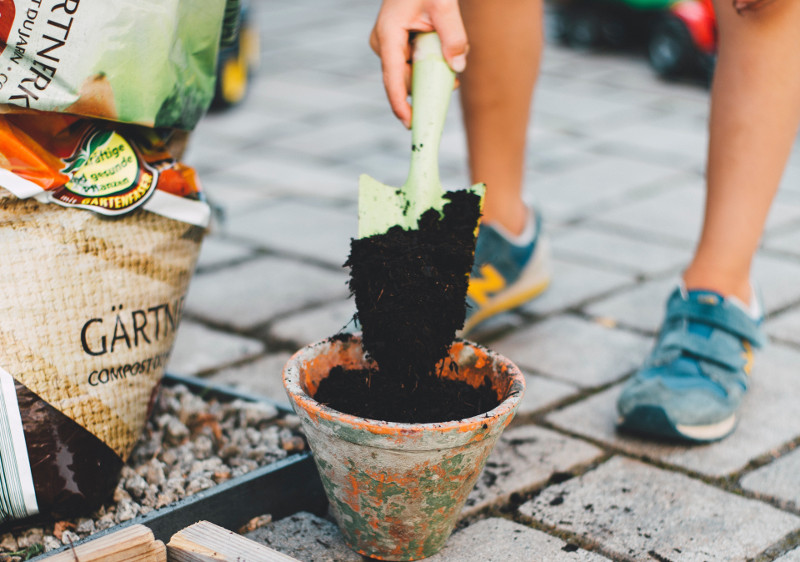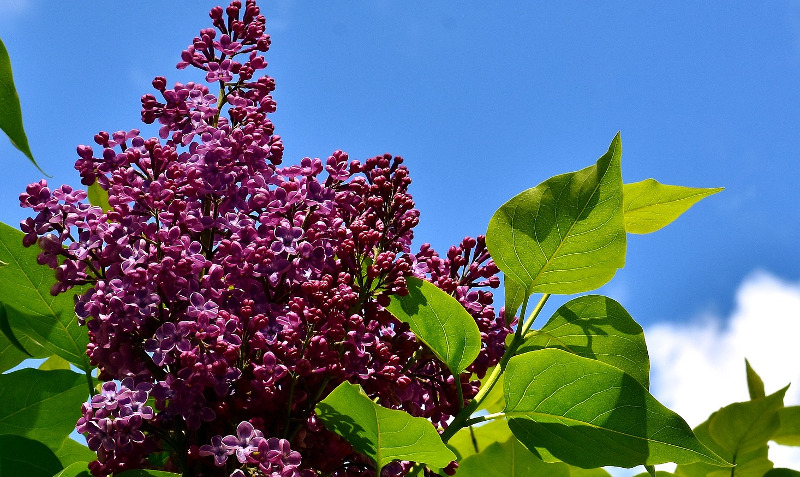Growing a lilac bush in a pot is a possibility. Choosing the right type of bush is important. When selecting a lilac variety for a decorative pot, look for a dwarf variety such as our Bloomerang® Dwarf Purple Lilac. Ideal placement for potted lilacs can be balconies, rooftop patios, decks, and very small garden or landscape areas.

Planting Lilacs in Pots
Small container lilacs need a lot of space for their roots. They grow well when they can stretch their roots and develop into larger plants. We recommend a container as large as you can manage- no smaller than 12 inches deep and 24 inches wide. Larger containers mean better insulation of the roots from extreme heat or cold. It also ensures that the roots are protected from being exposed to excessive heat or being frozen. The larger the pot means that the lilac needs to be watered less frequently. Avoid containers that are black as they can draw unnecessary heat to the lilac.
Best Soil For Lilacs in Pots
Lilacs thrive in fertile, humus-rich, well-drained, neutral to alkaline soil (at a pH near 7.0). Lilacs cannot endure acidic soils. You will need to look for alkaline or a base potting soil. Many of the commercial potting soils have peat moss, which make the soil acidic to some degree. If your soil is in poor condition, you can add compost to enrich it.

Caring For Lilacs in Planters
Appropriate care of potted lilac plants is important. Place it somewhere that receives at least 6 hours of full sun every day. Keep it relatively moist, watering every time the soil dries out to an inch below the surface. If the roots are restricted, the plants will not flower or have proper growth. It is important to cut back the roots when they grow beyond the size of the container.
Watering Lilacs in Pots
After potting your lilac, water it and keep it fairly moist. Water your lilac every time the soil dries out to an inch below the surface. (usually once or twice a week) The leaves will begin to droop or fold if the plant is getting too dry. Lilacs should not be overwatered as it can drown the plant or cause root rot.
Fertilizing Lilacs in Pots
Fertilize your lilac plant once a year at the beginning of spring. Use a 10-10-10 fertilizer. Bone meal can also be used to fertilize your plant. It is a natural plant food and easy for the lilac to intake. Bone meal makes the soil more alkaline. Lilacs thrive in fertile, humus-rich, well-drained, neutral to alkaline soil (at a pH near 7.0).
Winter Care For Lilacs in Pots
A lilac in a pot will need protection during the winter. During this time of year, never bring your lilacs indoors. Cold temperatures are necessary to help the flowering buds mature. If the winters are harsh in your area, severe cold may harm the roots of lilacs. You should take your plant out of the container and bury it in the ground to insulate it. Another option is burying the plant with it’s container in soil, straw, or leaves. If you do this, make sure your container is strong enough to last through the winter. Stay away from natural pot materials, like untreated terra cotta. The material absorbs water which can expand when frozen and end up cracking the pot. We recommend our resin plastic containers. They can tolerate the freezing temperatures. Lastly, you can place your lilac pot in a cold frame or unheated garage for the winter after the first hard frost.

Can Lilacs Be Grown Indoors?
Smaller lilac plants, such as our Bloomerang® Dwarf Pink Lilac, can thrive in containers. Appropriate care of potted lilac plants is important. Place it in a south facing window that receives at least 6 hours of full sun every day. More than likely lilacs won't "thrive" indoors, but they can survive if given enough sunlight. Keep the lilac relatively moist, watering every time the soil dries out to an inch below the surface. If the roots are restricted, the plants will not flower or have proper growth. It is important to cut back the roots when they grow beyond the size of the container.
 |
Author Chris Link - Published 12-04-2020 |
